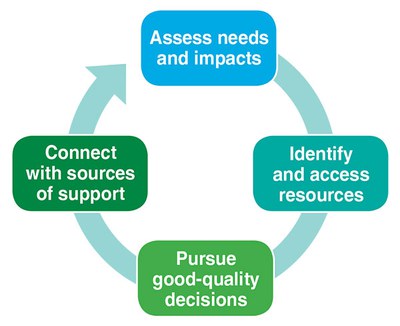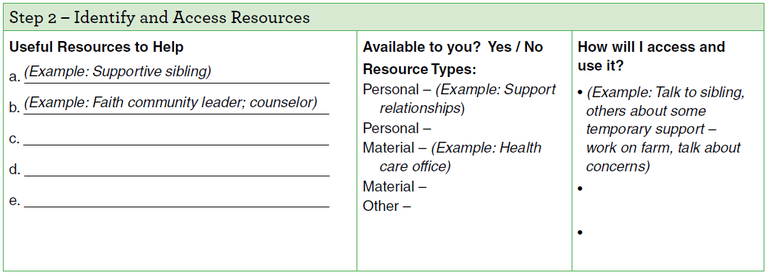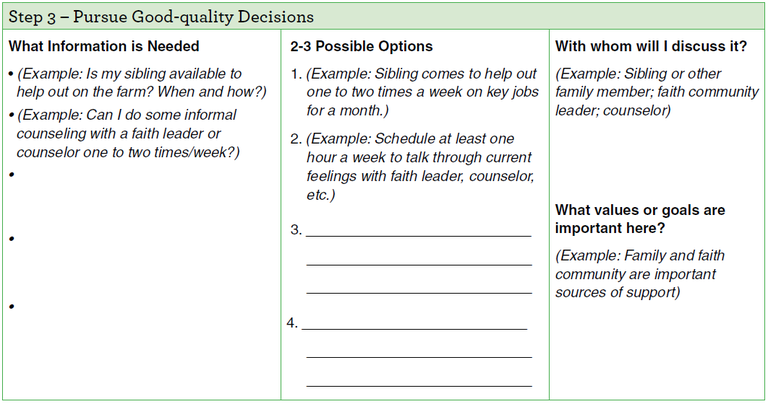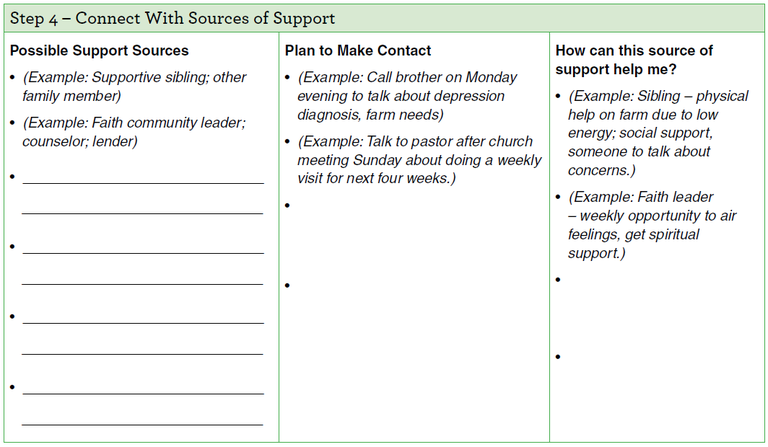To reduce or manage stress, a second step is to identify and access available resources that can assist you. Resources are what you have or can access to meet needs or goals. If you are thirsty, for example, the resource most helpful in meeting or reducing that need would be water (or juice, milk, etc.). Use the following points to explore this step:
■ Identify the resources that will be of most help to you in managing a specific need or stress. Sometimes, multiple resources can work together and be helpful. For example, if the need is getting more good-quality sleep, resources might include a new pillow, a better sleep schedule, journaling, a warm shower, physical exercise, avoiding TV or other screens before bed or a neck massage to help you relax and feel ready to rest. Brainstorm about the resources that might help you!
■ Assess availability of key resources and what might be done to access them. Also, think about what other resource types might help with a need. Resource types include the following:
• Personal resources – Knowledge; creativity; optimism; cooperation with others; support from others; trust; etc.
• Material resources – Money; land; labor; capital; equipment; professional help; community organizations; etc.
■ Briefly describe a strategy to access and use key resources identified.




